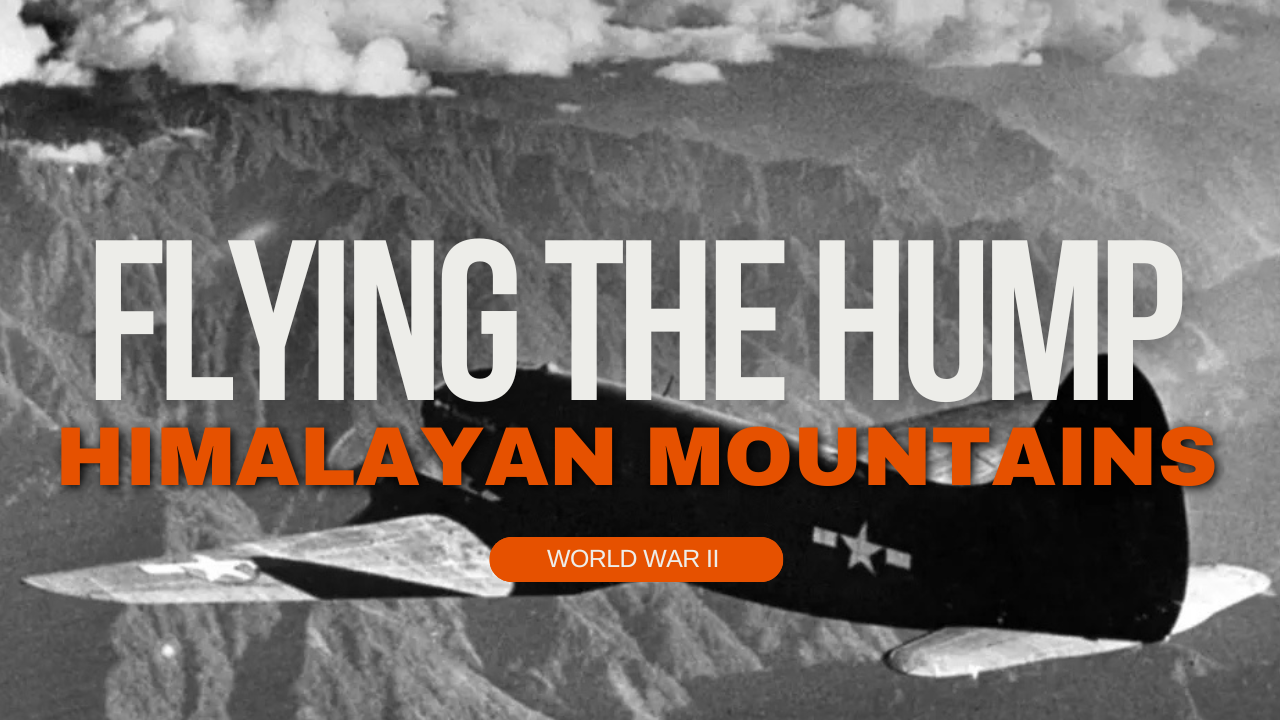Flying the Hump

The Daily Dose provides microlearning history documentaries like this one delivered to your inbox daily: https://dailydosedocumentary.com Teachers, check out our entire film catalog organized by curriculum and category here: https://www.platospeach.com/catalog/ or as a spreadsheet here: bit.ly/dailydosedocumentary We strive for accuracy and unbiased fairness, but if you spot something that doesn’t look right please submit a correction suggestion here: https://forms.gle/UtRUTvgMK3HZsyDJA Learn more: https://dailydosedocumentary.com/flying-the-hump/ Subscribe for daily emails: https://subscribe.dailydosenow.com/ Become a Patron: https://patreon.com/dailydosenow Follow us on social media: Twitter: https://twitter.com/TheDailyDose18 Facebook: https://www.facebook.com/thedailydosenow Click to subscribe on YouTube: https://www.youtube.com/c/DailyDoseDocumentary?sub_confirmation=1 #documentary #history #biography Today’s Daily Dose short military history film covers the WW2 airmen that flew supplies over the Himalayas from India into China, encountering some of the most dangerous flying conditions in the world.
The filmmaker has included the original voice over script to further assist your understanding:
Today on The Daily Dose, Flying The Hump. Following Japan’s occupation of southeast and east Asia during WW2, the Allies needed a way to deliver supplies to resistance fighters in the China-Burma-India Theater, in particular, to those fighters entrenched in western China. Due to a Japanese naval blockade along the Chinese coast, the 712-mile Burma Road became the Allies’ primary supply line, stretching from present-day eastern Myanmar—then called Burma—to Kunming in the Yunnan Province of China. That all ended when the Japanese overran Burma in April of 1942, forcing the Allies to organize a nonstop airlift over the Himalayas, from Assam Province in India to Kunming, forcing gutsy Allied pilots to tackle the dangerous skies over the tallest mountains in the world.
A Bucket of Water
Nicknamed The Hump, one pilot, Lieutenant Jay Vineyard, described his trips over the Hump like he was “flying through a bucket of water,” while General William H. Tunner wrote in his memoir that “It was safer to take a bomber deep into Germany than to fly a transport plane over the rockpile from one friendly nation to another.” Over the next 42 months, Hump pilots flew just shy of 1.8 million tons of supplies, including 685,000 tons of gasoline, to China, Burma, and India, hauling 12,000 tons a month by early 1944 to a remarkable 71,000 tons in July of 1945; an achievement that significantly bolstered an eventual Allied victory. The Hump also witnessed the loss of a 594 aircraft and 1,659 American and Allied airmen, whose final resting place remains largely unknown in the inhospitable reaches of the Himalayas. Over the last fourteen years, however, teams of Indo-American mountaineers, medics, local tribespeople, forensic archaeologists and members of the U.S.
Ongoing Search
Defense POW/MIA Accounting Office have ventured through dense tropical jungles and scaled to altitudes of 15,000 feet in search of wreckage and human remains, to locating no more than 20 airplanes and the remains of several MIA airmen. Much of the recovered relics are now on display at the Hump Museum in Pasighat, a scenic town in the state of Arunachal Pradesh, nestled in the foothills of the Himalayas, making Hump pilots, some of the most courageous aviators of the Second World War.
Music from #Uppbeat https://uppbeat.io/t/apex-music/the-air-we-breathe License code: XY7WW6KHKHTUWNVV
Music from #Uppbeat https://uppbeat.io/t/braden-deal/closing-in License code: OV7KVFKCYDG0QKTC
